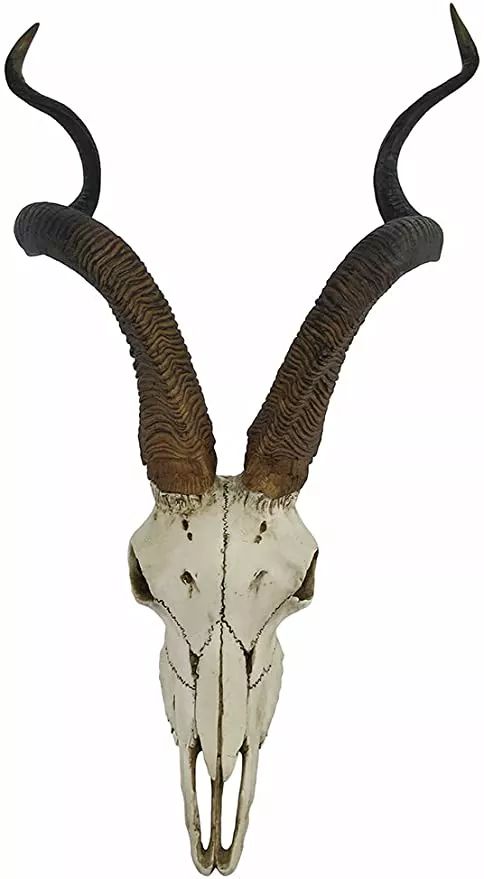
In African antelopes, some female African antelopes have horns, but in males, they are always thicker at the base. The base is its strongest point (where it meets the skull) as the males fight with theirs.
Sable African Antelope
A male Sable African antelope in his prime is something to see. He has a magnificent pair of horns. The average male/bull boasts a pair of horns that reach about 1 metre long (3.3 feet). The male with the longest horns usually has the most females/cows. He patrols his territorial border with his head held high and beating some vegetation as he proudly lets his trembling rivals know this is his turf (his territory) and his ladies.
- This is why you sometimes see bulls with vegetation laced across his face and/or horns.
Elands
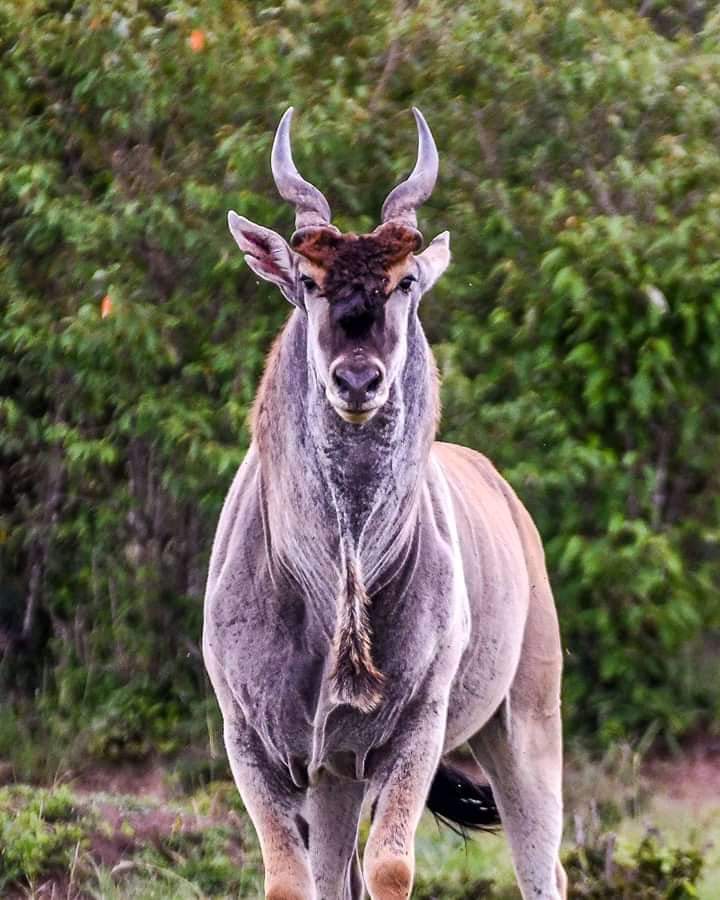
Elands also defend their young — even if they are not the parents. It was observed a coalition of four cheetah brothers tried to pull down a young eland. If they could have separated the youngster from the adults, they would have been able to kill it, but not usually even if one healthy adult fiercely defends it. The adults aggressively chased the brothers away.
- Elands are the biggest African antelope in the world, here is a photo of a cheetah laying down near a relaxed eland. The eland is not worried as it knows a cheetah would never even try.
*The eland is the largest African bovid, but the slowest antelope.
*Males and females have both horns. The female’s horns generally grow thinner and longer
*It can only run at about 40km/h (This is the maximum speed)
*Life span is about 15-20 years and the gestation period is around 274 days
- Males can weigh up to 940kg (Adults) while females is about 300-600 kg (Adults)
You can easily recognize the adult males by the large fold of skin hanging below the throat (dewlap) and the patch of long coarse dark hair at the forehead that grows longer and bushier as the animal ages
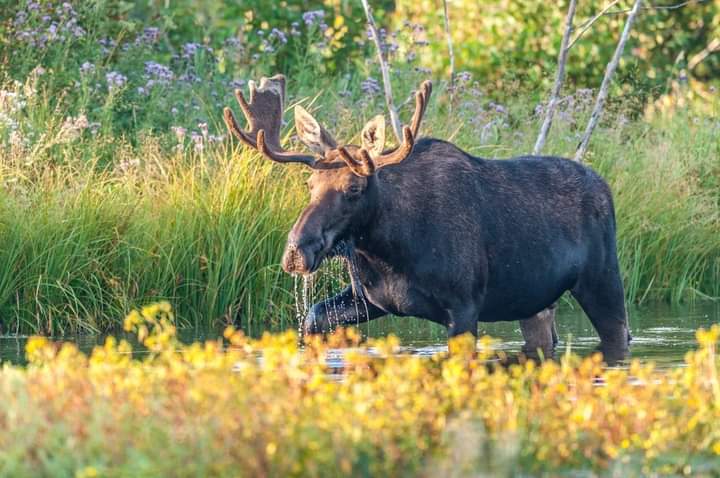
Elands are the world’s biggest two antelope, but a bull moose is the world’s largest deer.
Red-flanked Duiker
The red-flanked duiker is an African antelope and one of the 21 duiker species. It is found in central and west Africa, with currently a decreasing population due to illegal hunting/poaching. In some communities in western Nigeria, it is called “bush-goat” due to its resemblance with a common female domestic goat.
It is an omnivore (eats both plant and animal materials). Its gestation (pregnancy) lasts for 8-9 months. Some cultural beliefs in the Borgu parts of Benin-Republic and Nigeria has it that the skin of this animal is sacred for making a special talking drum. This is one of those historical myths.
- The red-flanked duiker is classified as ‘least concern’.
Topi African antelope
The Topi African antelope looks extremely similar to the common tessebe (or sassaby) antelope), but that is because it is a sub-species of the tssebe, and so closely related, if found in the same area (usually not, though) they can interbreed.
The Topi inhabits savannas, grasslands and floodplains, but mostly found on the grasslands and often stands on termite or ant mounds of sub-Saharan Africa.
The common tsebbe is found in Southern Africa and has bigger herds than the topi.
An African Antelope rams and bulls do not usually draw blood when they fight for breeding rights, and after ramming and pushing one another back and forth, usually one retreats and the winner proudly struts around walking stiffly with his head held high.
In Africa we find many species of African antelope, but making it a bit easier on everyone, some are grouped together in tribes.
The first one to note, is the one that often comes up and that is the ‘spiral-horned tribe’ — they are the African antelopes with spiralling or twisting horns). This tribe includes the kudu, bongo, nyala, sitatunga, eland and the bushbuck.
- In this tribe, the bushbuck is the smallest (photo of bushbuck).
Thomson’s gazelle (Gazella Thomsoni)
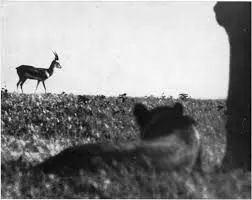
The Thomson’s is affectionately called the ‘Tommie’, and it will be often our preferred name.
The Tommie was named after Joseph Thomson, who was a Scottish naturalist and decided to explore East Africa on his own and on foot (brave, as there were plenty of predator’s around back then!). This was in the early 1880s — he was trying to establish a route between Mombasa and Lake Victoria.
Tommies are social African antelope and are found in family groups of up to 200. They are very much part of the East African landscape and the most are seen around the Masai Mara National Reserve, Laikipla and Kajiado rangelands, Serengeti, Ngorogoro Crater, and Tarangire. And in the Serengeti there is migratory populations and these guys follow the wildebeest and the zebra on the great annual Serengeti population.
It is often confused with the Grant’s gazelle, and they can graze together, but the Grant’s is much larger.
So, best to know your Thomson’ gazelle’s description:
- The upper body of a tommie is a light brown/beige (sandy-fawn) with a bit/tinge of reddish-brown.
- The under part of its body (tummy area), insides of legs and rump are white.
- There is a white ring around the eye which extends as a stripe down the nose.
- The Tommie’s forehead and face is a chestnut (like a reddish-brown) except….
- It has white on the cheeks.
- Males (rams) and females (ewes) have horns, but the horns in the females are smaller (shorter) and thinner — they often are broken or deformed. The Tommie’s ringed horns curve delicately backwards before straightening and becoming vertical at the tips — the males have larger horns.
- They have a hairy and black tail.
As we know the Tommie has a hairy and black tail, and when you see them, they look like the always wag it like an over excited dog. However, look a little closer and you will see they actually do not wag it from side to side, but whir it round and round. Why they often do this, no one knows.
The Tommie has long been seen as one of Africa’s most abundant gazelle. In the Serengeti, for example, there were hundreds of thousands, but now only an estimated 150, 000 are left and this is mainly due to poaching and hunting (legalized poaching). The Tommie is in danger as its numbers are declining and it is now classified as ‘near threatened’ (entire continent).
The male Tommie is called a ram, and the female Tommie is called a ewe, and the baby is called a lamb.
The Tommie has a rounded muzzle and prefers eating short grass — it is mainly a grazer but in the dry season, it will also eat fruits.
It is often seen with other ungulates, like wildebeest and zebra, but those two eat the long grass and the Tommie will eat the short grass, preferably new shots. It will also walk distances to find suitable grazing — like it can eat a patch of grass and when done, will move to a newer patch some distance away. The Tommies in the Serengeti, do not move as much and tend to stay in one place, for a longer time.
Tommie rams are territorial. The average territorial area are usually around 10 – 30 hectares, but some can be small and only about 2.5 hectares. And some can be huge — like 300 hectares!
Thompson gazelle Ewes are pregnant for 165 – 180 days and give birth to one lamb. The lamb is weaned at 2 months, and sexually mature at 19-21 months. Their lifespan in the wild, is 12 years.
The ewes give birth and mate during the rainy season — this is the peak of the breeding season. Most ungulates only breed once a year, but the Tommie is different as they can often give birth twice a year.
The pregnant ewe gives birth in seclusion and moves away from the hard for about 3 weeks. While the mother grazes, the lamb stays lying flat on the ground and when she is about 20 metres away, the mother calls it and it quickly gets up to suckle. They will remain with their mother for 8 months.
Have you noticed Tommies stopping and cocking their head towards a tall blade of grass? They are ‘anointing’ it with a thick and sticky and black secretion from the preorbital gland below/in front of their eye. They are leaving their scent. Both sexes have them, but they are bigger in the males as they use them the most and every day they urinate, defecate and deposit that scent onto grass to mark their territory.
A Tommie is one of the fastest gazelles, and races at 80 kmh (49 mph) but can only keep up that great speed for 15-20 minutes. Few predators can catch them as they also twist and change direction in a split second and jump (pronk or stot). Few predators… Except for the cheetah as it can also follow its exact moves at phenomenal speeds.
The Tommie does have other predators, to name the more obvious — the lion, jackal, African wild dog, spotted hyena, leopard and martial eagles.
- A ewe trying to chase away a martial eagle predating on her lamb.
When they spot a predator, the Tommies come together and stop to watch it. They follow its moves (move with it) and usually back and forth in a small circle always keeping the predator in view. The predator usually leaves, as it relies mainly on stealth and the element of surprise has been lost!
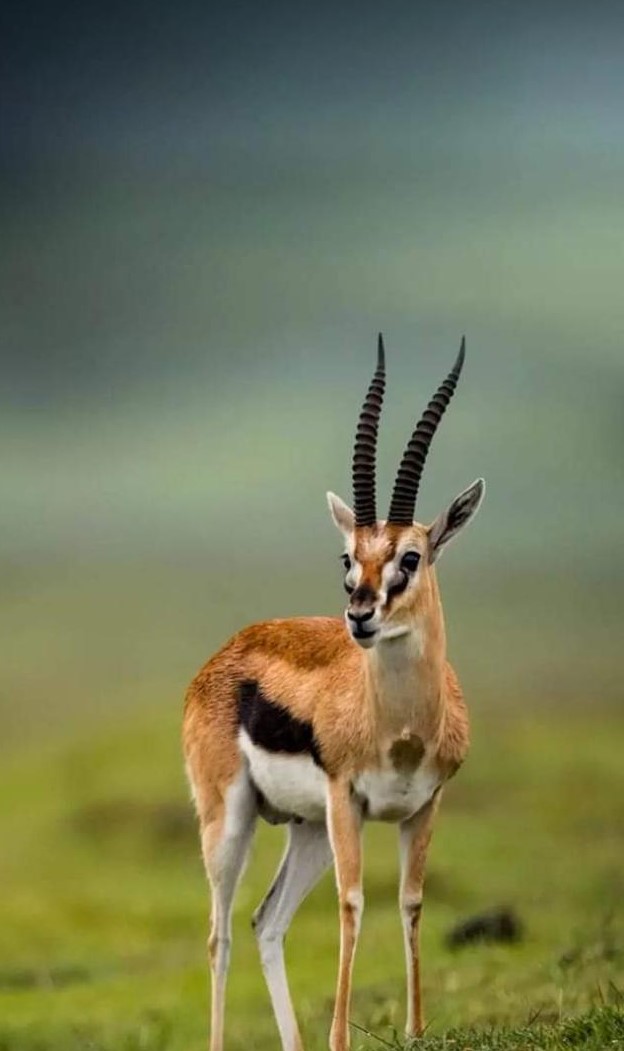
Thomson’s gazelle is a gazelle with a cinnamon back and a bold black flank stripe beneath a pale buff band; the underparts are white.
The face has black eye stripe, the nose a dark marking, and the forehead a light patch, all of which are subject to individual variations.
Thomson’s gazelle prefer an open grassland.
Mongalla gazelle
There is another very similar gazelle and some experts say it is a subspecies of the Tommie, but others say it is not. Nonetheless, it is worth mentioning.
This is the Mongalla gazelle, found and native to Sudan, mainly the south of Sudan. As said, they are very similar and the only difference between the two is the white ring around their eyes.
The Mongalla’s extends to the forehead and forms a distinctive white patch and its horns turn slightly inwards at the tips.
Hirola African Antelope
The hirola African antelope, better known as the hunter’s hartebeest is a rare antelope and listed as ‘critically endangered’. This is quite possibly the world’s rarest and most endangered African antelope, competing only with the saiga African antelope of the Eurasian steppes. There are so few of them (hirola) left — 300-500, and sadly, they share the spotlight here with Ethiopian wolf that is the rarest carnivore, that both are not found in captivity.
The word ‘hirola’ is a Somalian word (as they are found on the border of Somalia and Kenya) and it has a pastoral meaning — they believe it is good to see these rare African antelope near or grazing with cattle because they believe if they leave or disappear so will their cattle, or get very sick.
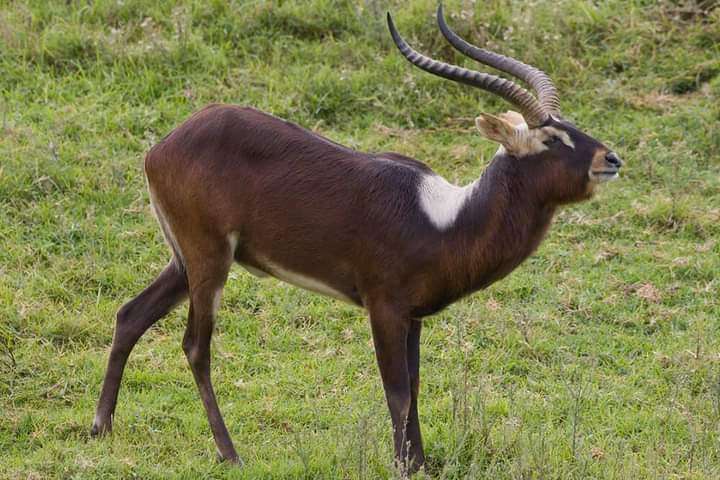
African antelopes have been grouped into different tribes, like all the water-related African antelope: The waterbuck, lechwe, kob, puku, reedbuck and mountain reedbuck belong to their own tribe called ‘The Reduncini Tribe’.
Kudu’s magnificent horns only begin to grow at 6-12 months.
A mature bull’s horns average about 120 cm (1.2 feet), and twist 2 and a half times. Some bull’s horns reach 188 (1.8 metres) and twist three times.
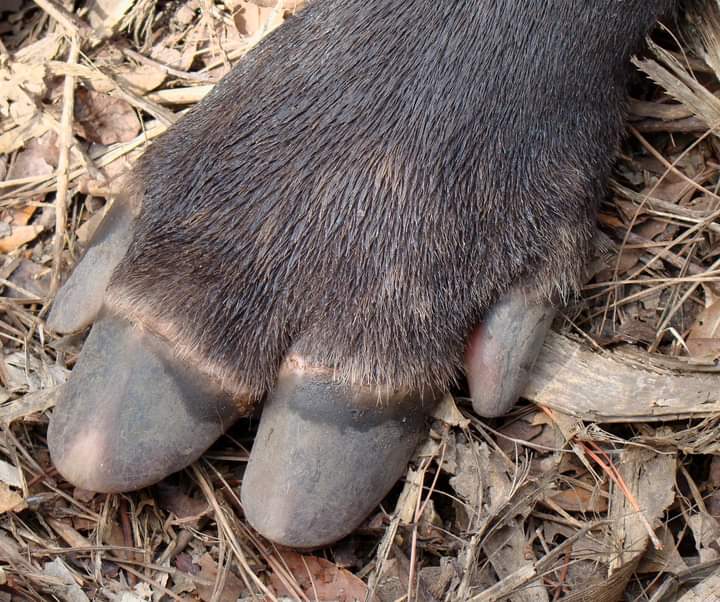
As we know an African antelope are even-toed ungulates, as they have two toes — it looks like a split hoof, but they are two separate toes. Another even-toed ungulate has more than 2 toes; it has four toes, and this is the tapir (found in South America).
- The numbers ‘two’ and ‘four’ are even numbers — that is why they are called ‘even-toed ungulates’. Unngulat= hoofed mammal.
Blesbok vs Bontebok

The blesbok is lighter in colour than the similar looking bontebok, it also has a brown strip, on either side — above the eyes that cuts into the blaze; while the bontebok has a solid blaze.
Gemsbok
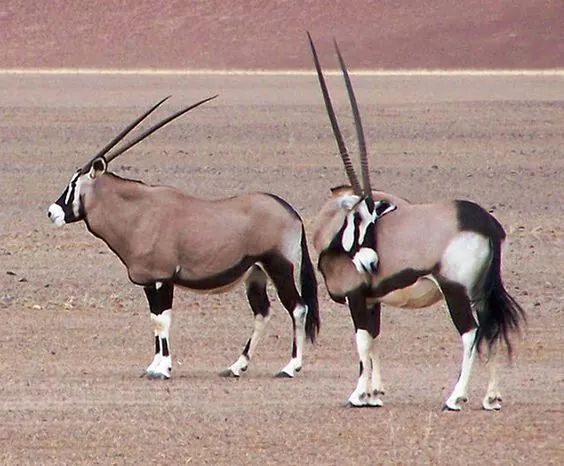
The Gemsbok is Africa’s most well known desert African antelope. In this harsh environment, where water is scarce they will browse any vegetation and dig for roots and tubers to get vital water/moisture.
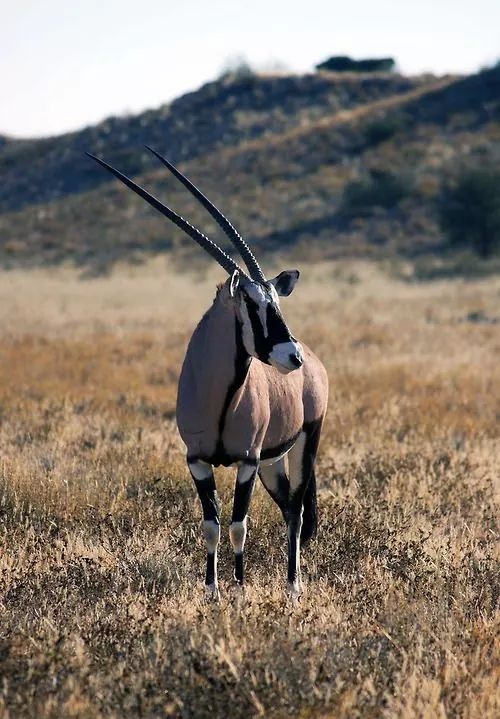
It is native to the arid regions of Southern Africa, such as the Kalahari Desert. They are fast breeders and pregnant for about 8.5 months. Soon after giving birth, they can breed once again. This fast oestrus cycle allows the cows to breed in 9 month intervals.
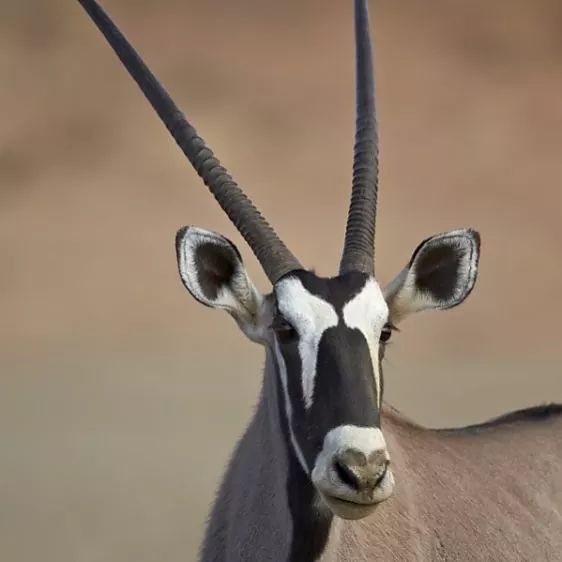
You must always remember that predators have preferred prey, for example, the preferred prey for lions in the Kalahari are adult gemsbok, while the other top predator, in the same area, prefers a different diet — The spotted hyena is quite capable of hunting adult gemsbok (as they do in other areas), and can also hunt and eat adults but prefers the calves.

